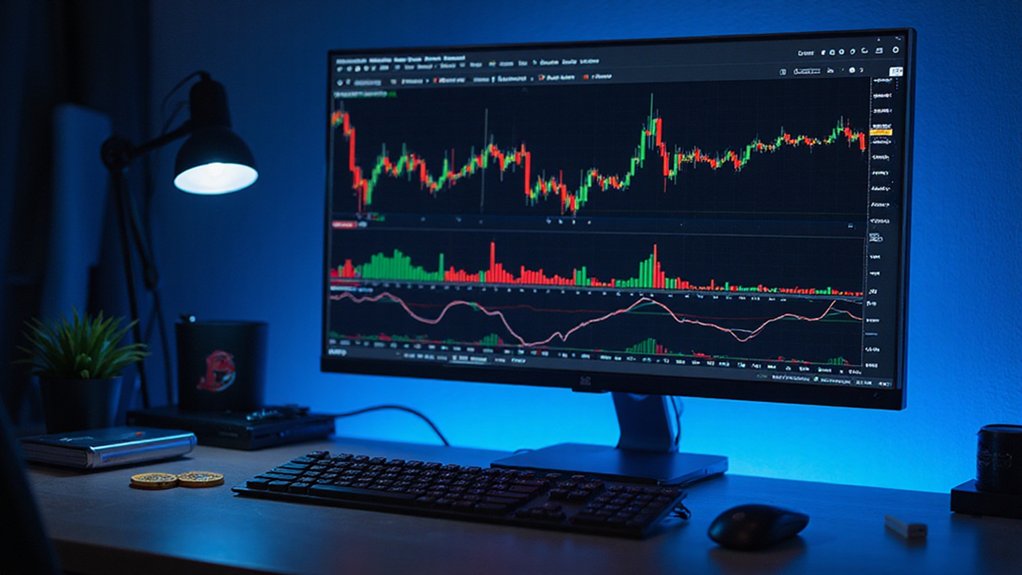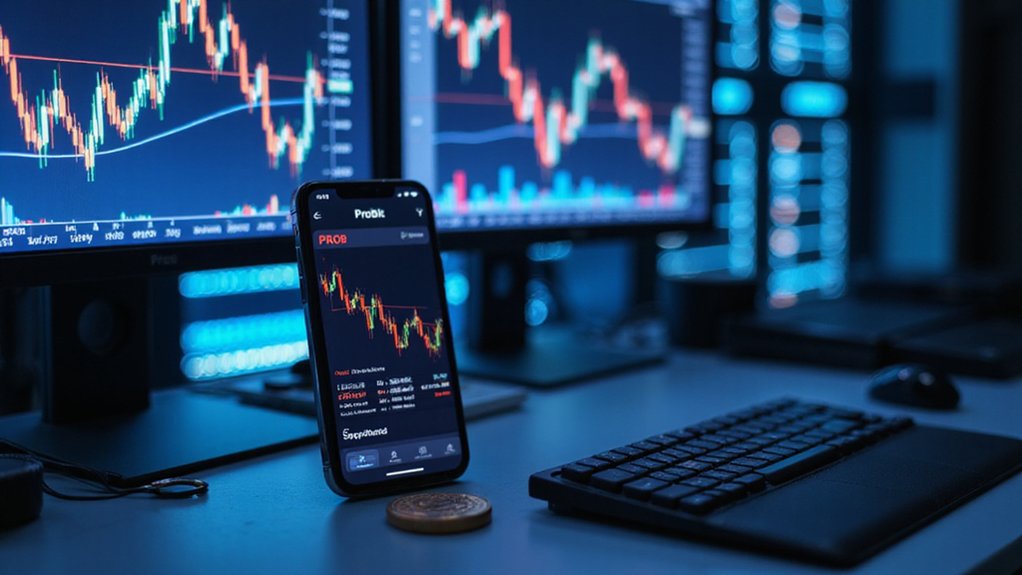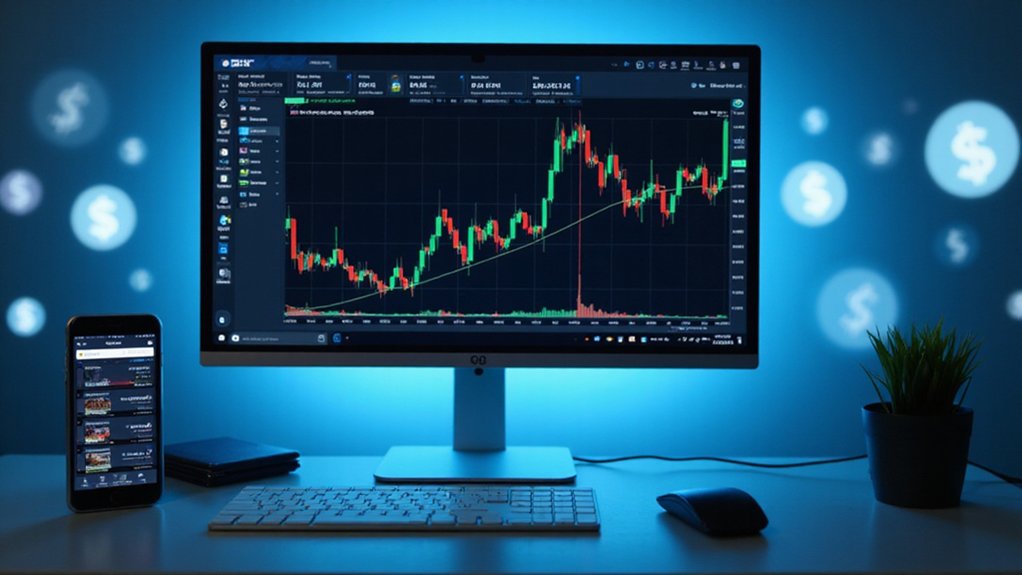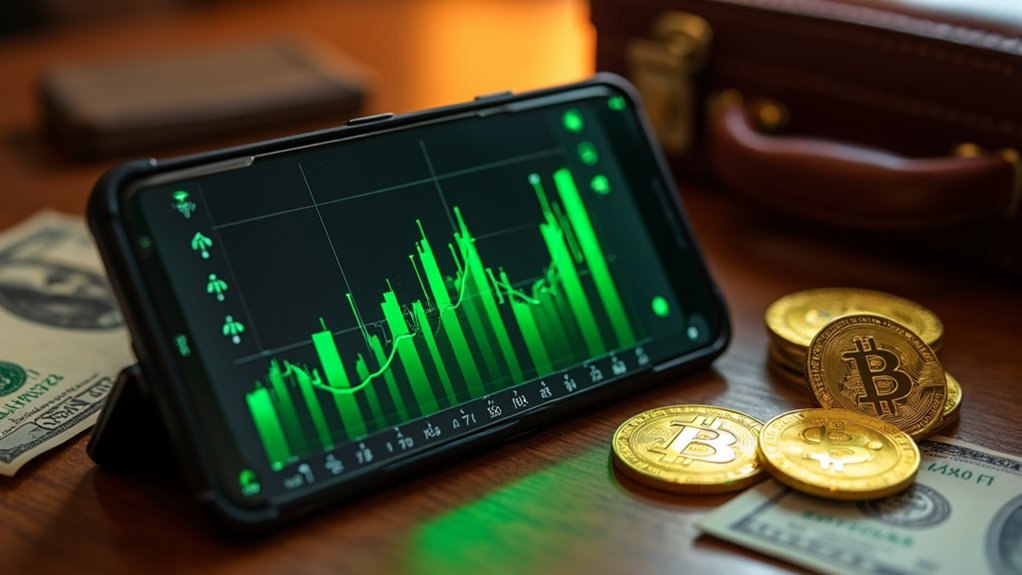UpBit, South Korea’s flagship exchange since 2017, offers traders access to over 200 cryptocurrencies with competitive fees (0.25% for fiat, 0.2% for USDT/BTC markets). The platform’s robust security infrastructure—cold storage, two-factor authentication, and ISO certifications—provides reassurance in crypto’s notoriously volatile landscape. While primarily serving Korean users with KRW as its sole fiat option, UpBit compensates with staking options yielding up to 17% annually on select assets. The platform’s limitations pale against its established reliability.
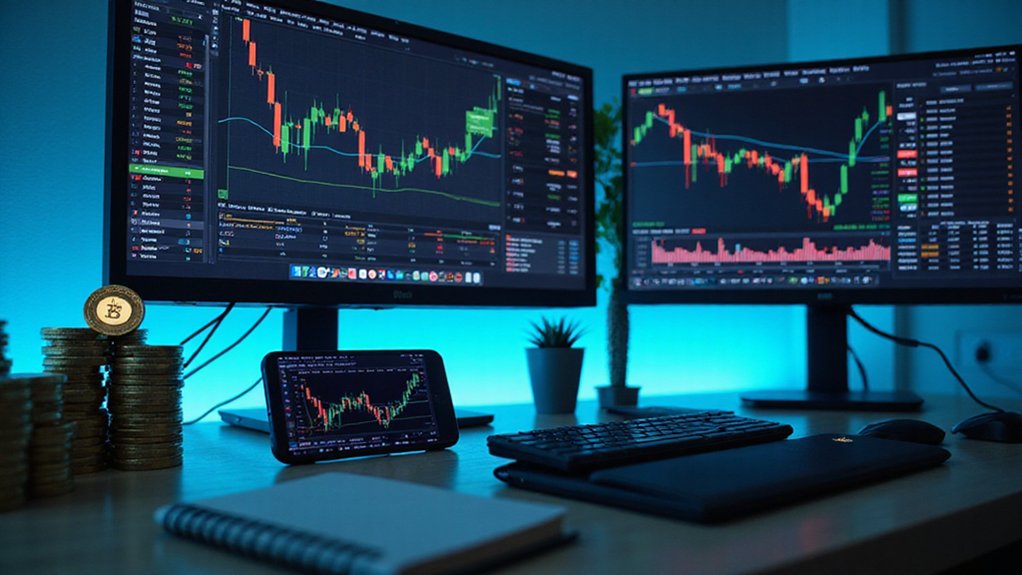
How does one navigate the labyrinthine world of cryptocurrency exchanges without succumbing to information overload?
For those considering UpBit—the South Korean exchange established in 2017 under the auspices of tech giant Kakao Corp.—the journey needn’t be intimidating despite the platform’s impressive scale and complexity.
UpBit has rapidly ascended to prominence among global exchanges, boasting trading volumes that would make traditional financial institutions raise a collective eyebrow.
Its strategic partnership with Bittrex (a rather consequential alliance, one might note) facilitates access to over 200 cryptocurrencies—a veritable smorgasbord of digital assets ranging from the ubiquitous Bitcoin and Ethereum to more esoteric offerings tailored to the Asian market.
The exchange’s fee structure presents a surprisingly straightforward proposition: 0.25% for fiat market transactions and 0.2% for USDT/BTC markets—rates that, while not revolutionary, remain competitively positioned within the ecosystem.
Minimal transaction fees (0.5 KRW for fiat and 0.0005 USDT/BTC for crypto) further sweeten the proposition for traders operating with varying capital bases.
Security—that perpetual concern in an industry plagued by spectacular breaches—appears robustly addressed through UpBit’s implementation of cold storage, two-factor authentication, and 24/7 monitoring systems.
The exchange’s ISO certifications (27001, 27017, and 27018) provide additional reassurance for the justifiably paranoid trader.
The platform’s interface strikes that elusive balance between functionality and accessibility, though its primary orientation toward Korean users may present certain limitations for international traders.
Support options include the standard triumvirate of phone, live chat, and customer lounge access—available round-the-clock for those inevitable moments of crypto-induced confusion.
One notable constraint: UpBit exclusively supports spot trading, with margin and futures capabilities conspicuously absent from its repertoire.
Additionally, the South Korean Won stands alone as the supported fiat currency, potentially limiting the exchange’s appeal beyond its regional stronghold.
Unlike Bittrex which suffered from regulatory challenges leading to its eventual closure, UpBit has maintained relatively stable operations in its jurisdictions.
For investors seeking passive income opportunities, UpBit offers attractive staking options with up to 17% annual reward rates on select cryptocurrencies including Ethereum and Cosmos.
Nevertheless, for those within its target demographic, UpBit represents a formidable option in the ever-expanding cryptocurrency exchange landscape. The platform’s support for over 150 digital assets makes it a comprehensive destination for traders seeking variety in their cryptocurrency portfolio.
Frequently Asked Questions
How Does Upbit Handle Security Breaches and Hacks?
Upbit’s security breach response protocol exemplifies the “break glass in case of emergency” playbook for exchanges.
Following their 2019 ETH heist, they promptly froze transactions, transferred remaining assets to cold storage, and—notably—covered customer losses from corporate reserves.
Their ongoing strategy combines automated transaction monitoring, regular system audits, and community coordination to blacklist stolen funds.
While regulators have questioned their identity verification practices (a separate yet related vulnerability), their incident response demonstrates institutional accountability rather than customer abandonment.
What Are Upbit’s Withdrawal Fees Compared to Other Exchanges?
Upbit’s withdrawal fees generally stand as competitive within the cryptocurrency exchange ecosystem, charging specific rates like 0.0005 BTC for Bitcoin and 0.01 ETH for Ethereum.
While these fees typically undercut Uphold’s hefty charges (which can reach $60 or 1.75%), they occasionally exceed Binance’s rates for certain assets—ADA being a notable example.
The fee structure fluctuates based on blockchain congestion, making Upbit a middle-ground option in the fee landscape, neither egregiously expensive nor remarkably economical.
Can Non-Korean Residents Use All Upbit Features?
Non-Korean residents can access Upbit’s trading interface and cryptocurrency pairs, but face significant restrictions—particularly with withdrawals, which have been blocked for foreign users since December 2019.
These individuals must navigate stringent AML/KYC requirements, including document resubmissions.
While existing non-Korean users maintain basic platform access, their funds may remain effectively frozen due to regulatory compliance measures.
Foreign users have consequently formed advocacy groups to petition for the release of their inaccessible assets.
Does Upbit Offer Staking or Yield Farming Options?
Upbit does indeed offer staking options for select cryptocurrencies, with its staking deposits impressively exceeding $2.2 billion.
Investors can earn passive income through established coins like Ethereum (approximately 3.1% annual rewards) and Solana (roughly 6.7%).
Unlike yield farming’s higher-risk liquidity pools, Upbit’s staking provides relatively stable returns with lockup periods.
Each stakeable asset maintains minimum requirements, making this a comparatively lower-risk avenue for passive cryptocurrency income versus yield farming’s notorious volatility.
How Responsive Is Upbit’s Customer Support Team?
Upbit’s customer support presents a decidedly mixed profile.
While maintaining daily operating hours (9AM-6PM) and multiple contact channels including email and KakaoTalk, responsiveness varies considerably.
The South Korean exchange generally delivers timely replies through their messaging platforms but falls short during verification processes or complex troubleshooting.
User feedback reflects this duality—some praise their innovation while others lament slow resolution times, particularly following security incidents that strained customer confidence.
International users face additional support limitations.
